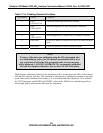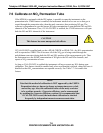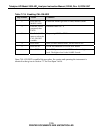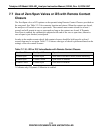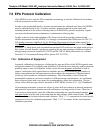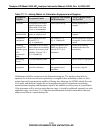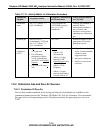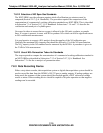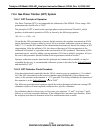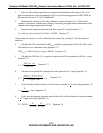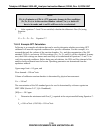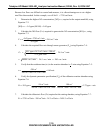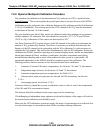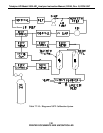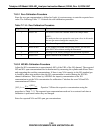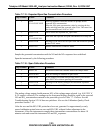
Teledyne API Model 200A NO
X
Analyzer Instruction Manual, 02246, Rev. G, DCN 5247
7.8.4 Gas Phase Titration (GPT) System
7.8.4.1 GPT Principle of Operation
Gas Phase Titration (GPT) is recommended for calibration of the M200A. Those using a NO
2
permeation tube should refer to TAD.
2
The principle of GPT is based on the rapid gas phase reaction between NO and O
3
which
produces stoichiometric quantities of NO
2
as shown by the following equation:
223 ONOONO
Given that the NO concentration is known for this reaction, the resultant concentration of NO
2
can be determined. Ozone is added to excess NO in a dynamic calibration system as shown in
Table 7-7-13, and the NO channel of the chemiluminescent analyzer detects the changes in NO
concentration. After the addition of O
3
, the observed decrease in NO concentration on the
calibrated NO channel is equivalent to the concentration of NO
2
produced. The amount of NO
2
generated may be varied by adding varying amounts of O
3
from a stable O
3
generator. All zero
air used in this procedure should conform to the requirements stated in Section 7.
Dynamic calibration systems based on this principle are commercially available, or may be
assembled by the user. A recommended calibration system is described in the Federal Register
1
and detailed in TAD.
2
7.8.4.2 GPT Calibrator Check Procedure
It has been determined empirically that the NO-O
3
reaction goes to completion (<1% residual
O
3
) if the NO concentration in the reaction chamber (ppm) multiplied by the residence time
(min.) of the reactants in the chamber is >2.75 ppm-min. The theory behind the development of
this equation is in the Federal Register
1
and in TAD.
2
The following procedures and equations should be used to determine whether an existing GPT
calibration system will meet required conditions for a specific calibration.
For calibrators that have known pre-set flow rates, use equations 7-5 and 7-6 of steps 7 and 8
(below) to verify the required conditions. If the calibrator does not meet specifications, follow
the complete procedure to determine what flow modifications must be made.
7-16
PRINTED DOCUMENTS ARE UNCONTROLLED



